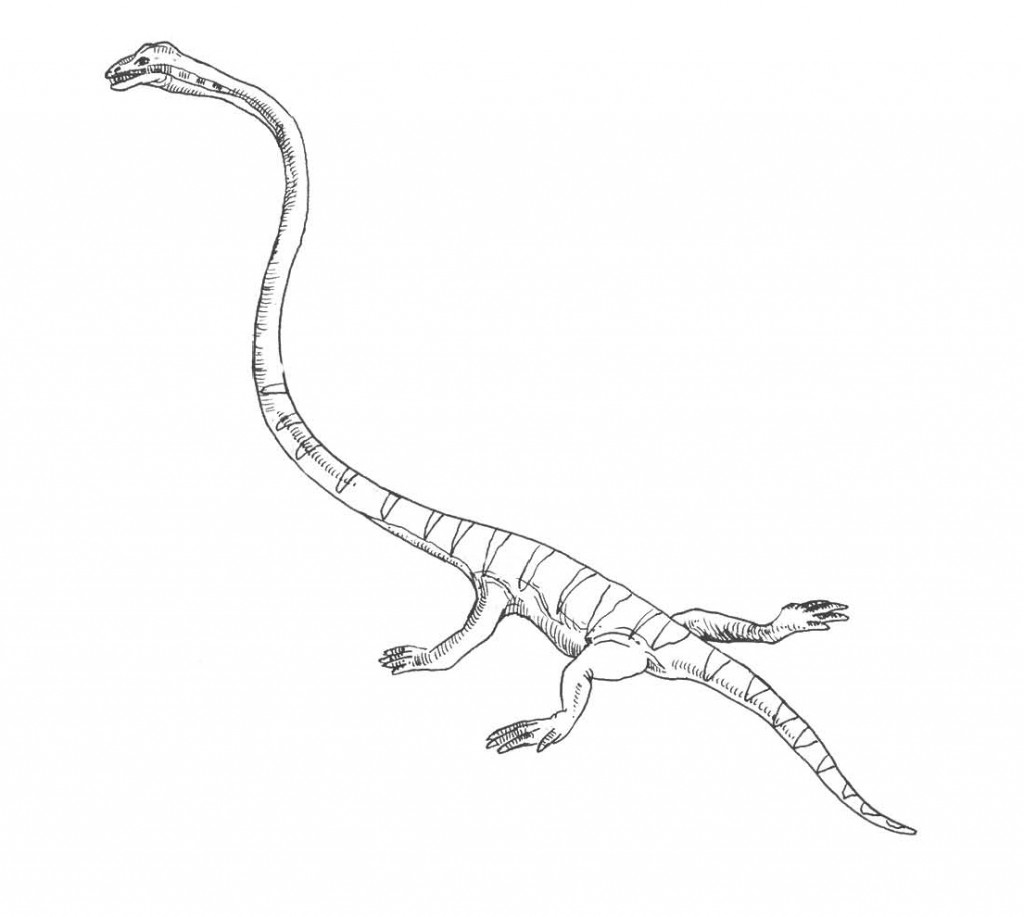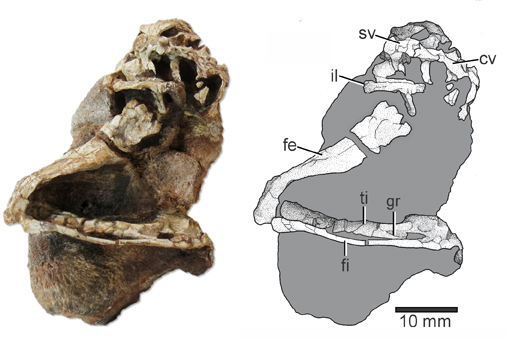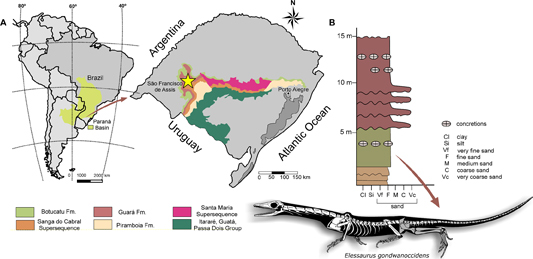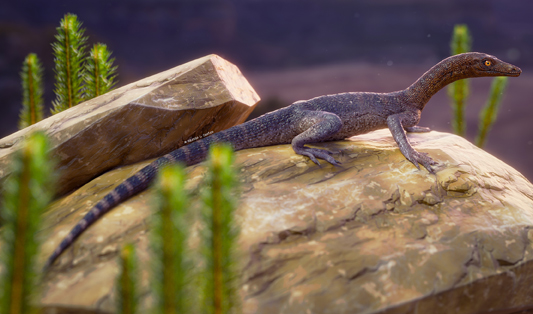Lower Triassic Fossil from Brazil – The Origins of the Tanystropheidae
Elessaurus gondwanoccidens – Unlocking the Origins of the Bizarre Tanystropheidae
After the mass extinction event that marked the end of the Permian many new types of terrestrial vertebrate evolved. The archosaurs radiated and developed into a variety of forms, one of the most bizarre groups to emerge were the Tanystropheidae, epitomised by the amazing Middle Triassic Tanystropheus with its hugely elongated neck.
The origin of the tanystropheids remains shrouded in mystery. The paucity of the fossil record has hindered palaeontologists in their research. However, a team of scientists have reported the discovery of fossils in southern Brazil that may shed light on the ancestry of these incredible reptiles.
Elessaurus gondwanoccidens
Writing in the academic journal PLOS One, the researchers which include Tiane De-Oliviera of the Federal University of Santa Maria, Brazil, describe and name Elessaurus gondwanoccidens. It had long legs and very probably a long tail. The genus name being inspired by the Elvish name (Elessar), a character from Lord of the Rings also known as Aragorn played by Viggo Mortensen in the trilogy of films directed by Peter Jackson.
A Life Reconstruction of the Newly Described Archosauromorph Elessaurus gondwanoccidens
Picture credit: Márcio L. Castro
An Illustration of the Bizarre Tanystropheus with its Greatly Elongated Neck

Picture credit: Everything Dinosaur
Fragmentary Fossil Material – The Posterior of an Early Triassic Archosauromorph
The fossil material used to describe this new species consists of a partially articulated hind limb and associated fossil elements including parts of the pelvis and caudal vertebrae. The specimen was collected at the locality Bica São Tomé, Sanga do Cabral Formation (Sanga do Cabral Supersequence, Paraná Basin of southern Brazil).
Based on other fragmentary vertebrate fossils known from this area, the rocks that contained Elessaurus are believed to date from the Lower Triassic. Although the Elessaurus fossil material represents just a portion of the skeleton and no bones from the anterior part of the animal are known, these fossils represent the most complete post-cranial fossil material obtained to date from the Sanga do Cabral Formation.
Elessaurus Fossil Material (UFSM 11471) and an Accompanying Line Drawing

Picture credit: De-Oliveira et al (PLOS One)
A Phylogenetic Assessment
A phylogenetic assessment of Elessaurus places this genus as a sister taxon to the Tanystropheidae. The analysis suggests that E. gondwanoccidens was closely related to the tanystropheids and as such it can provide information into the origins of these bizarre reptiles. Most tanystropheid fossils are found in Middle to Late Triassic rocks of North America, Europe and Asia. These fossils tend to be strongly associated with marine deposits, indicating that most later tanystropheids adapted to an aquatic or semi-aquatic lifestyle.
The discovery of the closely related but earlier Elessaurus in continental deposits from the Lower Triassic of Brazil, indicates that the origin of this group may lie in the southern continents, the landmass known as Gondwana. The location of the fossil was the inspiration for the trivial (specific), name of this reptile. The specific name is derived from the super-continent Gondwana and the Latin adjective “occidens” which means western.
Map (A) Showing the Location of the Fossil Find (B) Stratigraphic Diagram and a Skeletal Reconstruction of Elessaurus

Picture credit: De-Oliveira et al (PLOS One)
A Terrestrial Animal
The long legs of Elessaurus seem to be suited to a terrestrial existence. This suggests that the ancestral tanystropheids may have been entirely terrestrial before later species adapted to a more aquatic life. The discovery of Elessaurus provides a clearer view of the origins of the Tanystropheidae, the scientists hope that further fossil finds will shed more light on the ancestry and evolution of these very unusual tetrapods.
The scientific paper: “A new archosauromorph from South America provides insights on the early diversification of tanystropheids” by Tiane M. De-Oliveira, Felipe L. Pinheiro, Átila Augusto Stock Da-Rosa, Sérgio Dias-Da-Silva and Leonardo Kerber published in PLOS One.
The Everything Dinosaur website: Everything Dinosaur.


